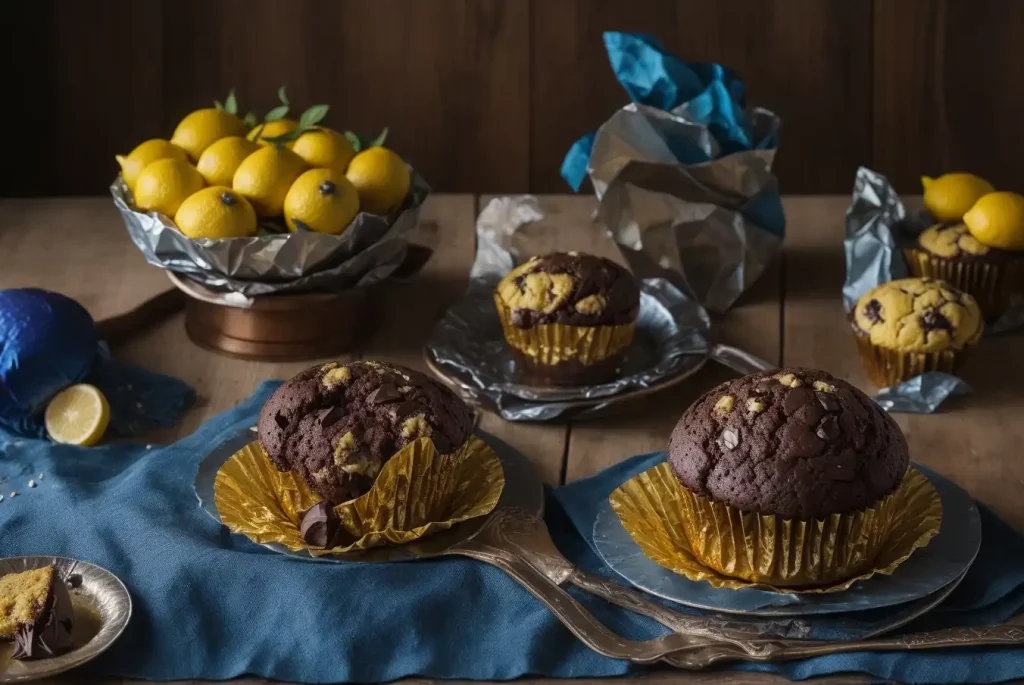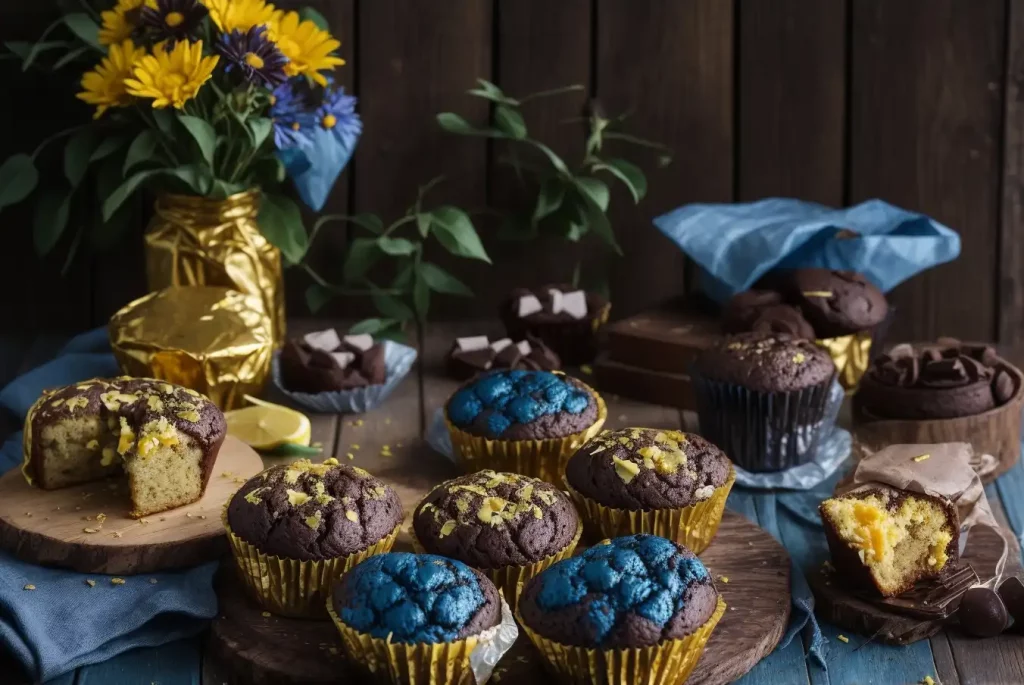Hey there, adventurers and dessert lovers! Guess what? Today, we’re diving into “Desserts in Disguise”—oh yeah, you heard me right.
You’re in for a sweet surprise because we’re making desserts. But not just any desserts!
We’re talking about mouth-watering sweet treats you can make right over your campfire, wrapped in foil.
I mean, come on, what’s not to love about that?
You get to be outdoors, enjoy nature, and indulge your sweet tooth, all at the same time.
So, grab your foil and a spatula; we’re about to make magic happen.
Are you ready? Let’s dig in!
Why Foil-Wrapped Desserts?
Before we get into the nitty-gritty, you might be wondering—why foil-wrapped desserts, of all things?
The Magic of Cooking in Foil
Cooking in foil is like a gift from the culinary gods.
Firstly, it helps in even cooking. You know how sometimes when you’re grilling, one side of your food gets all crispy while the other side is still wondering what happened? Foil solves that problem by distributing heat more evenly.
And let’s not forget about moisture. Ah, the moisture! Wrap your apple slices, a dollop of honey, and some cinnamon in foil, and what do you get? A steamed apple dessert that’s juicier than a summer watermelon.
Foil locks in all that succulent natural moisture, making your sweet creations ooze with goodness.
Versatility of Ingredients
This is where your inner dessert architect can shine.
Because cooking in foil is pretty straightforward, you can adapt a myriad of desserts to this method.
Ever thought about making a foil-wrapped brownie? Yep, you can do that.
What about some berry compote with a sprinkle of sugar and a dash of lemon juice? Totally doable.
Heck, you can even do a foil-baked cheesecake if you’re feeling fancy.
The options are almost endless. Just think of it as your regular kitchen baking, but with the added thrill of the great outdoors.
Read more: Campfire Foil Packet Cooking
Types of Desserts You Can Make
So, you’re sold on the idea of foil-wrapped desserts, but now comes the big question—what types of desserts can you actually whip up using this method?
Well, sit tight and grab a notepad; you’re gonna want to jot these ideas down.

Foil-Wrapped Cakes and Muffins
Batter up! Seriously though, batter-based desserts are a match made in heaven for foil cooking.
Imagine this: you’re sitting around the campfire, the smell of pine in the air, and you’re munching on a gooey chocolate cake that you just cooked over the embers. Sounds dreamy, right?
You can do classic vanilla, or if you’re a chocolate aficionado, go all out with double or even triple chocolate.
How about some lemon-blueberry muffins for a morning treat? Mix your batter beforehand, pour it into a foil cup, and let the campfire do its thing.
And let’s not forget coffee cakes or even cinnamon rolls. The foil method opens up a whole new world of cakey possibilities.
Sweet Foil-Wrapped Fruits
We all know fruits are nature’s candy, but have you tried taking them to the next level with a little campfire action?
Apples, pears, peaches, you name it—if it’s a fruit, you can wrap it in foil and turn it into a delectable treat.
Picture apple slices with cinnamon and nutmeg, sealed in foil and cooked until they’re tender. Add a dollop of ice cream, and you’re in for a treat.
Or how about some sliced bananas with a few chocolate chips and a sprinkle of coconut flakes? Close that foil up, grill it for a bit, and voilà! You’ve got yourself a tropical dessert right there.
And if you’re into a healthier vibe, grill some pineapple slices with a touch of honey. Sweet, tangy, and oh-so-delicious!
Campfire S’mores Reinvented
Ah, s’mores. The classic campfire dessert that we’ve all tried, loved, and probably made a mess eating.
But hold onto your marshmallow sticks; we’re giving s’mores a foil-wrapped makeover.
Instead of balancing marshmallows on sticks and trying to keep your chocolate from melting in your hand, why not package it all neatly in foil?
Take a graham cracker, add a piece of chocolate, and top it with a marshmallow. Fold it in foil, and toss it on the fire.
But why stop there? How about adding a dollop of peanut butter or some sliced strawberries for an extra burst of flavor?
This reinvented method not only keeps your hands cleaner but also lets you experiment with flavors like never before.
Also learn: Foil Packet Fish and Shellfish
Key Ingredients for Foil-Wrapped Desserts
So, we’ve covered the “what” and the “how” of foil-wrapped desserts. Now let’s talk about the “with what”—the ingredients!
The beauty of these desserts is that you don’t need a pantry full of exotic stuff. Most of the key ingredients are staples you probably already have at home.
The Basics: Sugar, Flour, and Fats
Let’s start with the trio that forms the backbone of any dessert: sugar, flour, and fats.
For sugar, consider the type and the amount. Granulated sugar is versatile, but you can also play around with brown sugar, honey, or even maple syrup for different textures and flavors.
As for flour, all-purpose is a safe bet, but you can mix things up. How about some almond flour for a nutty twist? Just be cautious with the ratios; swapping flours isn’t always a 1:1 deal.
Fats are your flavor carriers. Think butter, oils, or even lard if you’re going old-school. Remember, fat contributes to the texture, so choose wisely based on what you’re aiming for—crumbly, fluffy, or moist.
The Extras: Spices and Flavorings
Once you’ve got the basics down, it’s time to jazz things up. Spices and flavorings, step into the spotlight!
Cinnamon, nutmeg, and vanilla extract are the usual suspects when it comes to desserts. But don’t limit yourself; the foil-wrapping world is your oyster.
Ever thought of cardamom with apple slices? It’s like a hug in dessert form.
Or a dash of rosewater in your cake mix? Suddenly, you’re in a Mediterranean patisserie.
And then there are the zestier options. A little orange or lemon zest can turn a regular cake into a citrusy wonderland.
There you have it—your toolbox of key ingredients for making mouthwatering foil-wrapped desserts. Whether you stick to the basics or go wild with the extras, the end result is bound to be delicious.
Step-by-Step Guide: Your First Foil-Wrapped Dessert
Alright, enough talking! Let’s get our hands dirty, shall we?
Making a foil-wrapped dessert is like wrapping a present—except you get to eat it afterward.
I’ll walk you through your very first foil-wrapped dessert, from preparation to presentation. You ready? Buckle up!
Preparation
First things first—get your gear together.
You’ll need aluminum foil, cooking spray or parchment paper, and of course, your ingredients.
Give your foil a quick spray with cooking oil or line it with parchment paper; this helps prevent sticking.
Now, mix your batter, or slice your fruits—whatever you’re planning to cook. Get it all ready to plop onto that foil.
Last tip? Don’t overfill the foil. You’ll need some room to fold it up securely.
Cooking
Now, onto the fire it goes!
If you’re using a campfire, aim for hot coals rather than open flames. This helps for more even cooking.
Place your foil-wrapped dessert on a grate or directly onto the coals if it’s well-sealed.
The cooking time really depends on what you’re making. For example, a foil-wrapped brownie might take about 20 to 25 minutes. Fruits? Usually quicker—about 10 to 15 minutes.
Temperature-wise, you’re shooting for a medium heat. In a conventional oven, that’s around 350°F (175°C).
The Reveal
This is the drumroll moment, people!
Carefully unwrap the foil, watching out for hot steam that might escape.
What you’ll find is a pocket of joy that smells like a slice of heaven. Serve it up as is or give it a dollop of cream, a sprinkle of cinnamon, or a scoop of ice cream.
Remember, it’s not just about the taste; it’s also about the experience of revealing something you created, cooked in the most rustic way possible.
So there you have it—a simple guide to making your first foil-wrapped dessert. Once you’ve got the basics down, the sky’s the limit!
Tips for Success
So, you’ve got your first foil-wrapped dessert under your belt. Congrats!
But wait, before you consider yourself the next Gordon Ramsay of outdoor cooking, let’s dig into some pro tips to help you master the art.
Choosing the Right Foil
Ah, the eternal question—aluminum or non-stick foil?
Listen, both work, but they have their pros and cons.
Aluminum foil is cheap and easily available. But remember, stuff sticks to it like there’s no tomorrow.
Non-stick foil? A bit pricier, but your dessert slides off like a dream.
If you opt for aluminum, just make sure to grease it well. Or better yet, line it with parchment paper.
Temperature and Timing
Cooking is an art, but it’s also a science.
Temperature and timing are your best buddies when it comes to perfecting your foil-wrapped desserts.
Like baking a cake? You’ll probably want to cook it at medium heat, which is roughly the equivalent of 350°F in an oven. And timing? For something like a brownie, you’re looking at about 20-25 minutes.
For fruits, you can crank up the heat a bit more and cut the time to 10-15 minutes.
Keep an eye on it, though. Each fire is unique, and cooking times can vary.
Cleanup and Storage
Done and dusted, and now you’ve got this crumpled ball of foil. What to do?
If the foil is fairly clean, guess what? You can recycle it! Just give it a rinse and toss it in the recycling bin.
If it’s greasy or has bits of food stuck to it, then it’s better to throw it away.
As for leftovers, if you’ve got any, simply rewrap them in a fresh piece of foil and store them in a cool place.
You can even throw them back on the fire tomorrow for a reheated treat!
Common Mistakes to Avoid
Alright, you’re almost there! But even pros like us can make mistakes, right?
So let’s get into some common blunders people make when they’re whipping up desserts in foil.
Overcooking and Undercooking
Ah, the dreaded overcook and undercook, the bane of every chef’s existence!
So, here’s the deal: Fires are fickle things. One moment they’re roaring; the next, they’ve dwindled to embers.
That means it’s tricky to have a consistent cooking time. A good tip? Use a small handheld thermometer to check the internal temperature.
For batter-based desserts, stick a toothpick in the middle. If it comes out clean, you’re golden.
Ingredient Ratios
Okay, let’s chat about ratios.
You might be tempted to go all-in on the sugar, but don’t. Too much of any ingredient can ruin your dish.
The key is balance. Stick to the recipe, especially if you’re a beginner.
Too much flour? Dry and crumbly. Overkill on the butter? You’ll end up with a greasy mess.
Start with the basics, get them right, and then experiment.
Conclusion
Foil-wrapped desserts, my friends, are the unsung heroes of outdoor cooking.
They’re easy to make, easier to clean up, and the options are limitless. From gooey brownies to spiced apples, there’s something for everyone.
So, are you ready to be a campfire pastry chef? Grab some foil, fire up those coals, and let’s get cooking!
Hope this guide helps you create some mouth-watering delights on your next outdoor adventure.
So what are you waiting for? Try one of these recipes and let me know how it goes!


